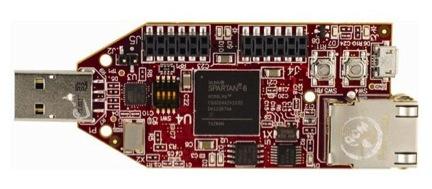How Do You Get Started Designing with FPGAs? Here’s How
January 16, 2015

In my previous blog, I discussed the DesignNews CEC online course that I am teaching through today on programmable logic, called "Programmable Logic: How Do They Do That?" Since Jan. 12, I have been introducing some of the key architecture, technology, and design techniques that are useful for just about any FPGA (field programmable gate array) design.
During my previous courses I had opportunities to answer questions from students, and I'm always surprised at the topics that come up. For example, in this course, I was surprised by the number of students who are interested in learning more about programmable logic but don't really know what the next step should be. It's a fairly complex topic, and I can see why it might be confusing to figure out what to do to get started. Luckily, the FPGA vendors have made it very easy to get started, with just a little investment in both time and money.
Most FPGA vendors provide free versions of their software tools and inexpensive evaluation boards that can be used to do some hands-on projects either at home or at work. These kits can be fairly powerful, so you can easily go beyond the normal "toggle and LED" version of "hello, world" that many of you are familiar with from low-end MCU (microcontroller) evaluation kits.
For example, a low-cost evaluation board for the Xilinx Spartan-6 FPGA (part number: AES-S6MB-LX9-G), available from Avnet Electronics, costs less than $100 and includes not only the Spartan-6 FPGA but also USB, Ethernet, onboard LPDDR memory, 128 Mb of Multi-IO SPI Flash memory, and expansion connectors. As you can see in the figure below, this board even plugs into a USB port to make it easy to program and debug your design.

The board also comes with a free version of the Xilinx FPGA development environment, ISE(R) WebPACK software with processor development, and debugging tools for the target board. Several reference designs, even some using the Xilinx Microblaze processor core, can give you a head start on implementing your own design. This type of kit is a perfect way to get your feet wet with FPGAs and follow up on my introduction to programmable logic online course.
If you want to look at other options for getting started with FPGAs, look at other manufacturers, including Altera, Lattice, and Microsemi, all of which have similar kits. One of the least expensive kits, the Lattice iCEstick evaluation kit, for the iCE40HX-1k FPGA, costs less than $30. It plugs into the USB port to simplify programming and debugging and also comes with free software and example designs. It doesn't have the peripherals that some of the more expensive boards have, but with some LEDs, switches, and an IrDA transceiver, it is a great learning platform -- and one you can even use to create a simple remote control as an example project.

Be careful when you look at the wide variety of kits available, however, because some kits are targeted at complex designs that require significant FPGA "horsepower" and expensive peripheral components. You can easily pay more than $2,000 for a fully featured development environment with boatloads of high-speed memory and interface ports. Some of these kits are well worth the investment if you have a complex design to get done in record time but are much too expensive for a "test run." I think this might be one of the reasons students in my course were confused; often, FPGA manufacturers and distributors feature these more complex kits instead of leading with the much less expensive "starter kits."
Related articles on DesignNews.com
So, if you are interested in adding FPGA technology to you engineering toolkit, grab some free tools and an evaluation kit and get started on your own FPGA project. It never hurts to expand your engineering toolbox, and FPGAs are only going to become more popular over the next few years.
If you are reading this post after my Design News programmable logic course already ended, the course is conveniently archived here.
Design engineers and professionals, the West Coast's most important design, innovation, and manufacturing event, Pacific Design & Manufacturing, is taking place in Anaheim, Feb. 10-12, 2015. A Design News event, Pacific Design & Manufacturing is your chance to meet qualified suppliers, get hands-on access to the latest technologies, be informed from a world-class conference program, and expand your network. (You might even meet a Design News editor.) Learn more about Pacific Design & Manufacturing here.
Warren Miller has more than 30 years of experience in electronics and has held a variety of positions in engineering, applications, strategic marketing, and product planning with large electronics companies like Advanced Micro Devices, Actel, and Avnet, as well as with a variety of smaller startups. He has in-depth experience of programmable devices (PLDs, FPGAs, MCUs, and ASICs) in industrial, networking, and consumer applications and holds several device patents.
About the Author(s)
You May Also Like



